
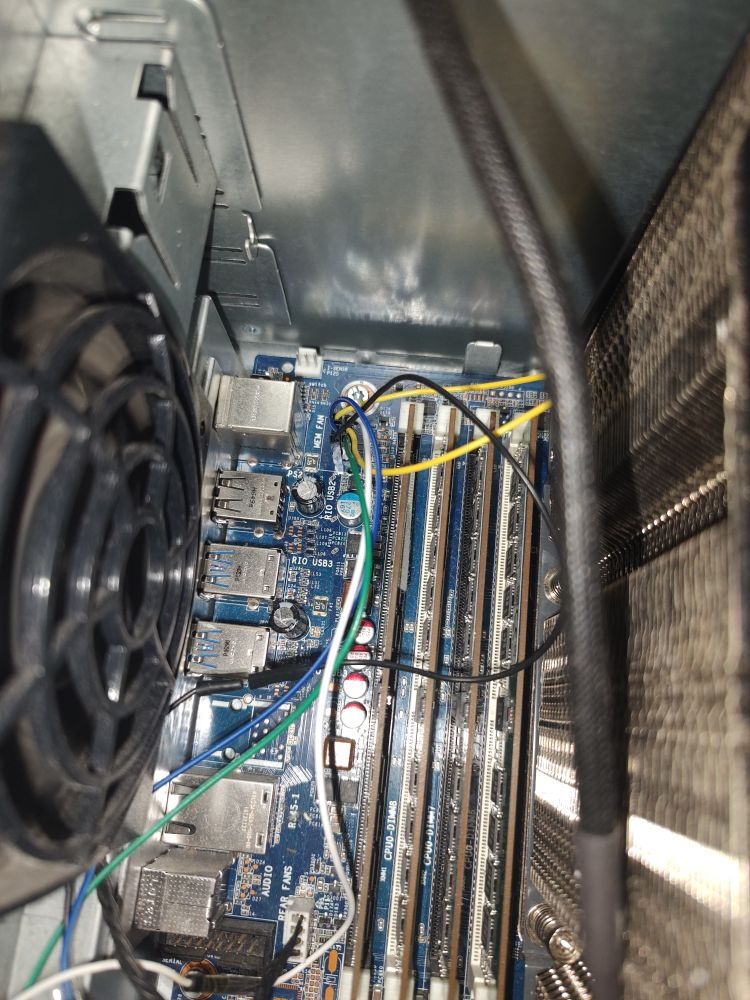
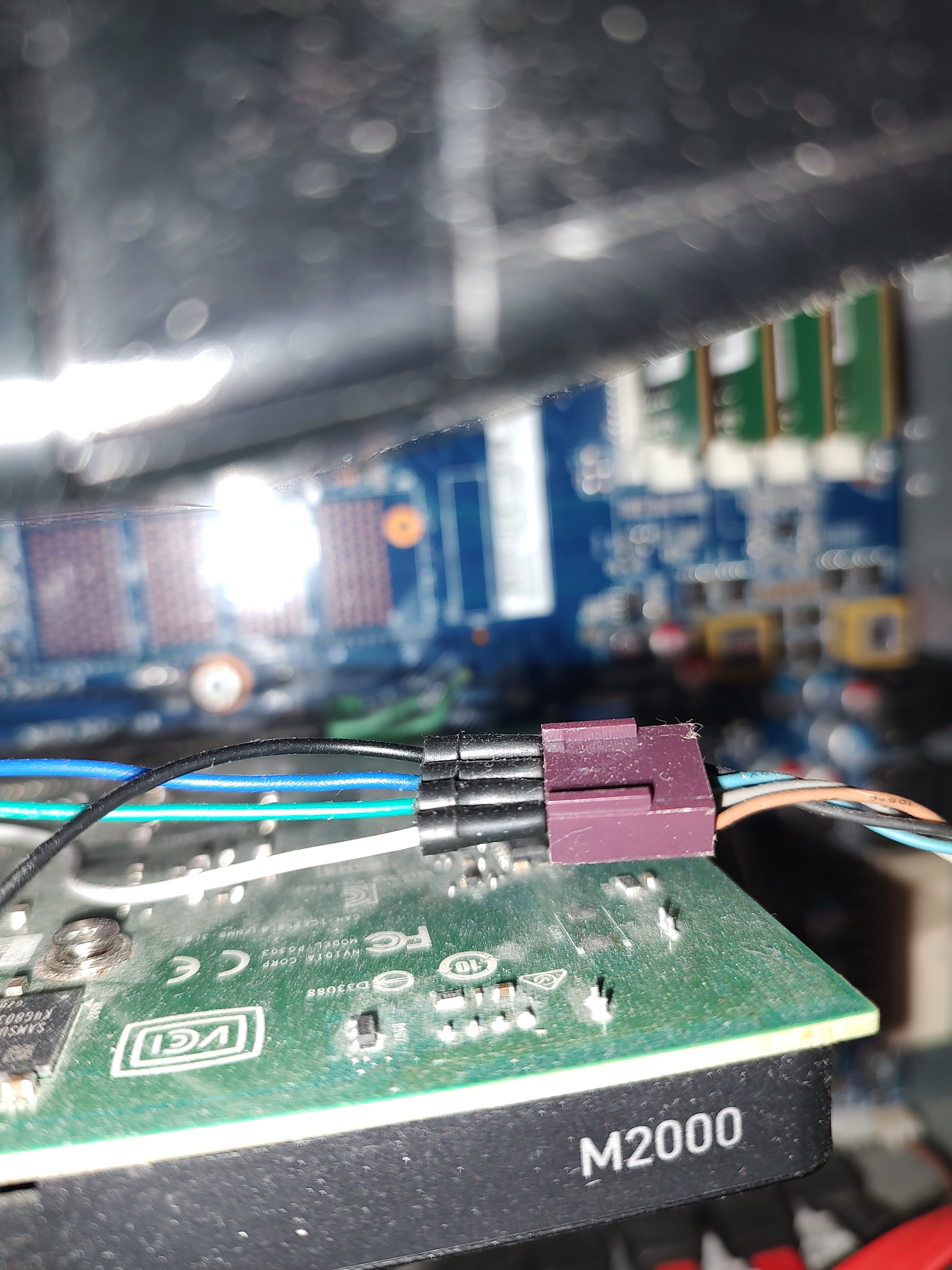
Soon to be neater, with the official memory fan, more drive caddys, and an extra DHCP/DNS server.
A place to share alternatives to popular online services that can be self-hosted without giving up privacy or locking you into a service you don't control.
Rules:
Be civil: we're here to support and learn from one another. Insults won't be tolerated. Flame wars are frowned upon.
No spam posting.
Posts have to be centered around self-hosting. There are other communities for discussing hardware or home computing. If it's not obvious why your post topic revolves around selfhosting, please include details to make it clear.
Don't duplicate the full text of your blog or github here. Just post the link for folks to click.
Submission headline should match the article title (don’t cherry-pick information from the title to fit your agenda).
No trolling.
Resources:
Any issues on the community? Report it using the report flag.
Questions? DM the mods!



Soon to be neater, with the official memory fan, more drive caddys, and an extra DHCP/DNS server.
Below, a picture of my small rack, which is located in my home office. Due to the selected components, it is virtually silent and still bobs along at only 26 - 28° C.
The hardware is divided into two Proxmox clusters. The first consists of the three Lenovo M920qs shown here and is home to my publicly accessible services and VMs, the second consists of the two Beelink EQ12s and is responsible for the internal services or those accessible via VPN.
Not the greatest or best Homelab, but for me, it fulfils all my needs and at the same time keeps the electricity costs down to an unimaginable level.
I host the following services on the public Internet:
Internally, I also provide the following services:
Seven Raspberry Pi 4's and one Pi Zero, mounted on some tile "shelves" inside some IKEA furniture.

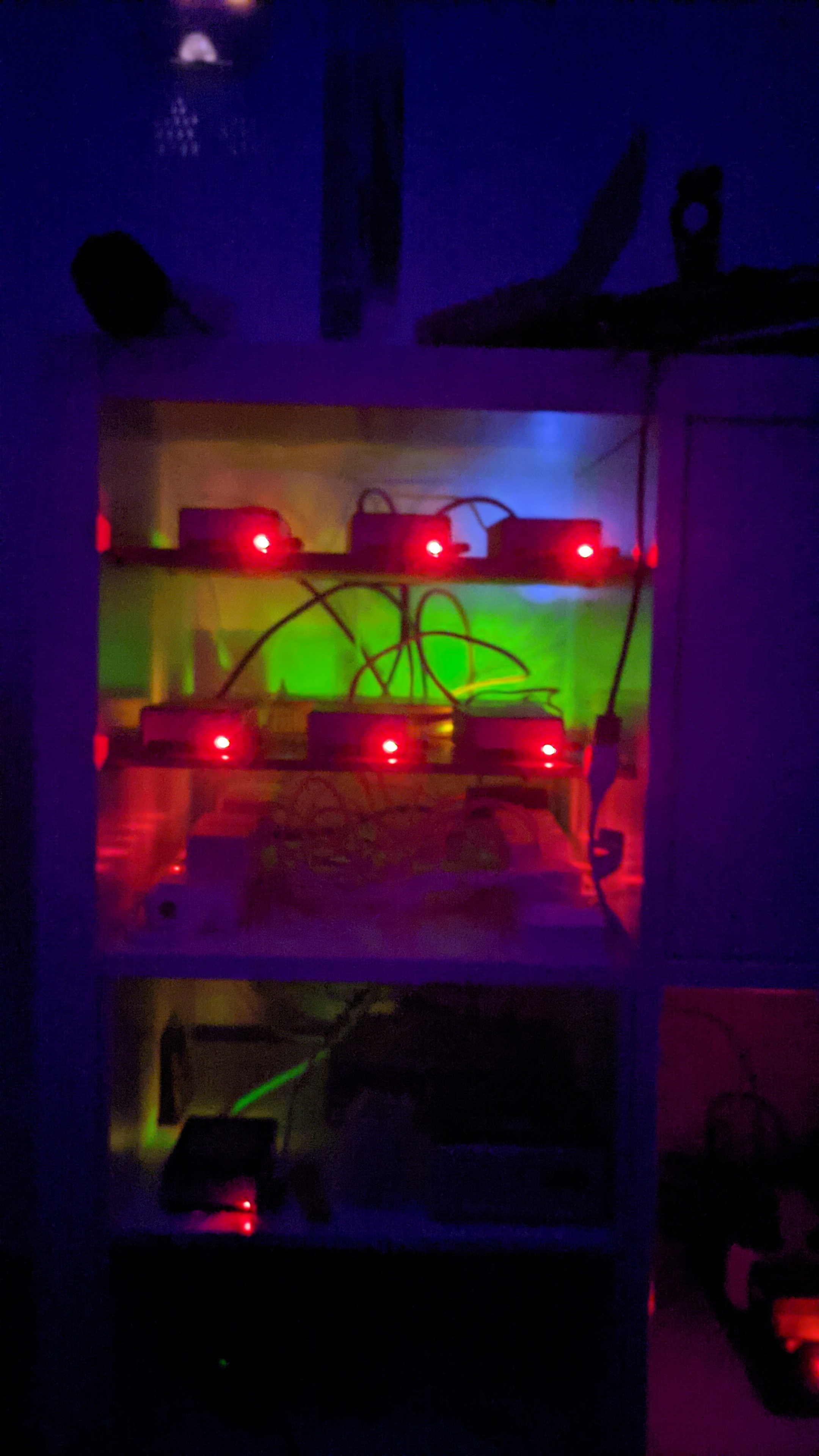

What do you do on that many pi's that could not be done easier on 1 x86 box?
They're fanless and low-power, which was the primary draw to going this route. I run a Kubernetes cluster on them, including a few personal websites (Nginx+Python+Django), PostgreSQL, Sonarr, Calibre, SSH (occasionally) and every once in a while, an OpenArena server :-)
 An old HP laptop with Debian hosting Klipper and Home Assistant. Waiting for an OTG cable so I could replace the laptop with a phone for less power and heat
An old HP laptop with Debian hosting Klipper and Home Assistant. Waiting for an OTG cable so I could replace the laptop with a phone for less power and heat
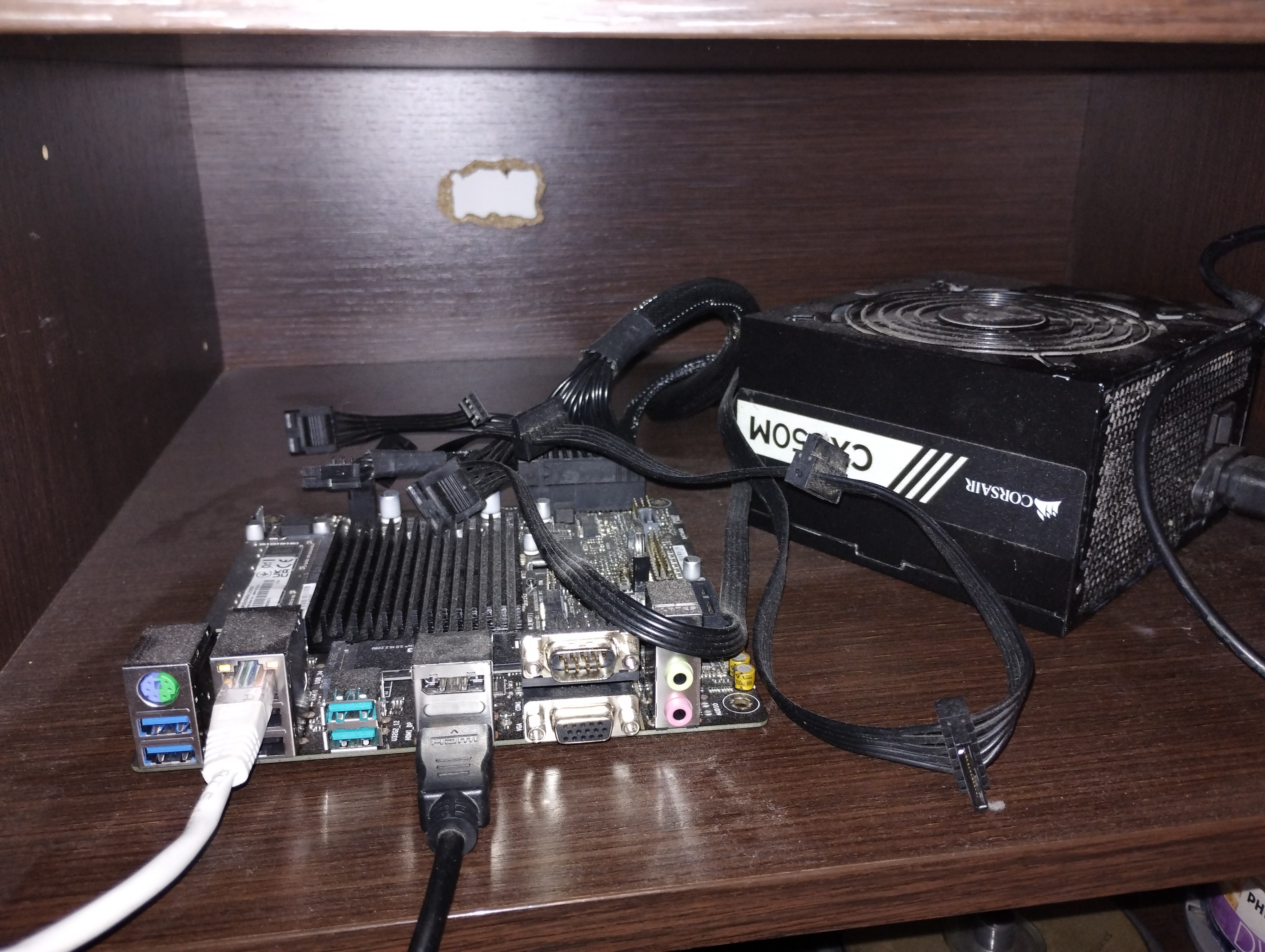
This is a custom built mini PC, with a mini-ITX motherboard and an Intel N100 CPU. It gets powered by a power supply that I got from an old computer. Also, it needs no active cooling, just a heatsink. It almost never gets above 60°C.
(and yes, it has no case).
In it I run:
lmao mine looks simple af compared with most people here.
Behold my server :

Hardware:
Rasberry pi 5 8GB
1TB raid between old drives ( one from PC the other a just a regular external WD hard drive ).
Services
Everything in containers, if you want to know more check this blogpost.
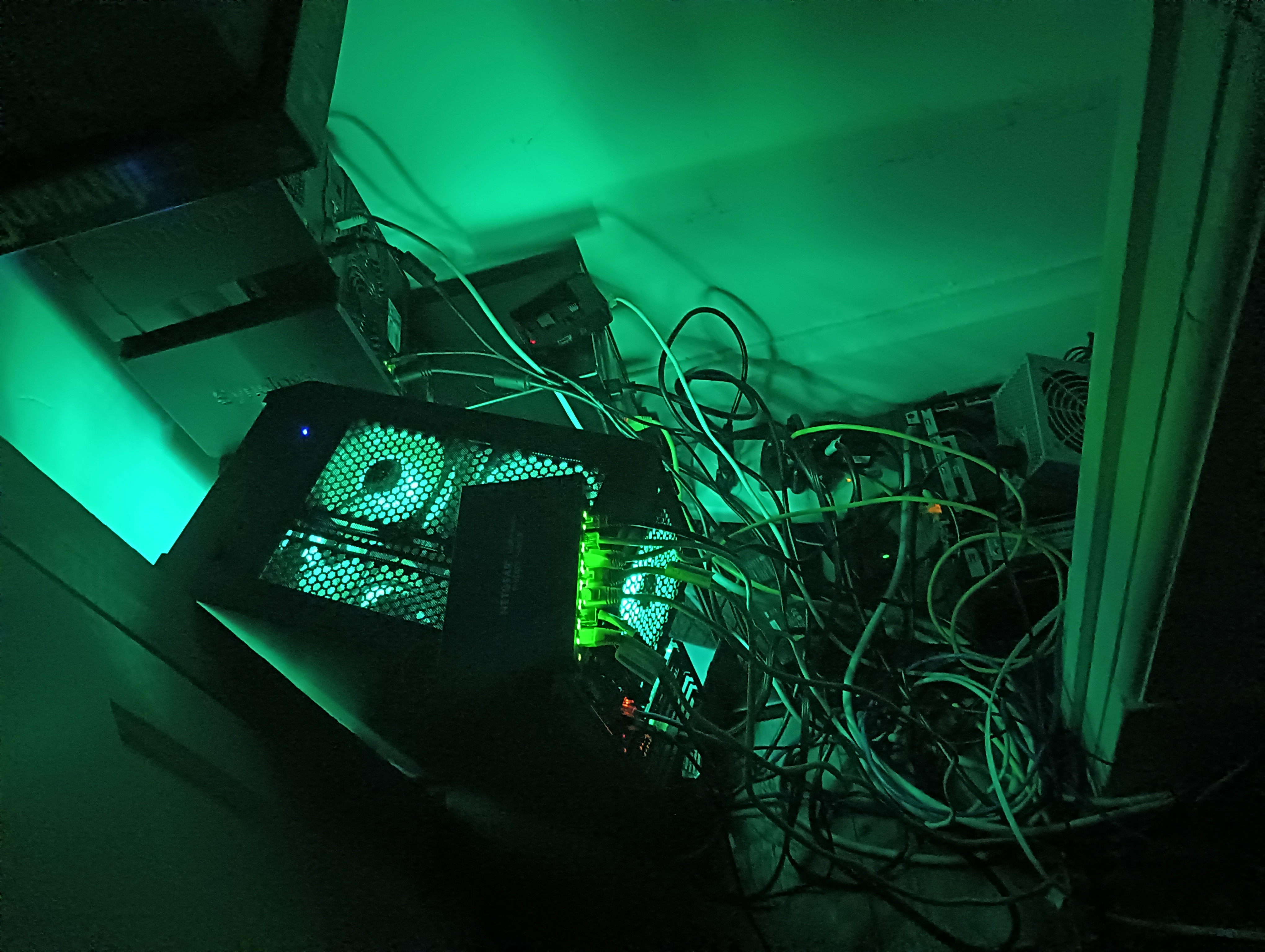
This one gave me the confidence to post my setup, I salute your bravery (°_°)7.
The best of luck with your future insurance claim.
was going through some old pictures and decided I'd post a retro setup. pretty sure I took this picture with my android g1....so 2008ish?
here is a pic of one of my first selfhost setups. I began selfhosting for music and have never stopped. this iteration was stuffed behind a bar that was built in to the basement at my old house
the old fashioned was custom built and was running some flavor of windows server. the one on the floor was the first Linux server I had run to do something useful...torrents and subsonic IIRC. I pieced that server together with random parts, mostly donated from old family PCs. two UPS units were on the bottom rack of that metro shelf to battery back the servers and the tomato router out of frame.
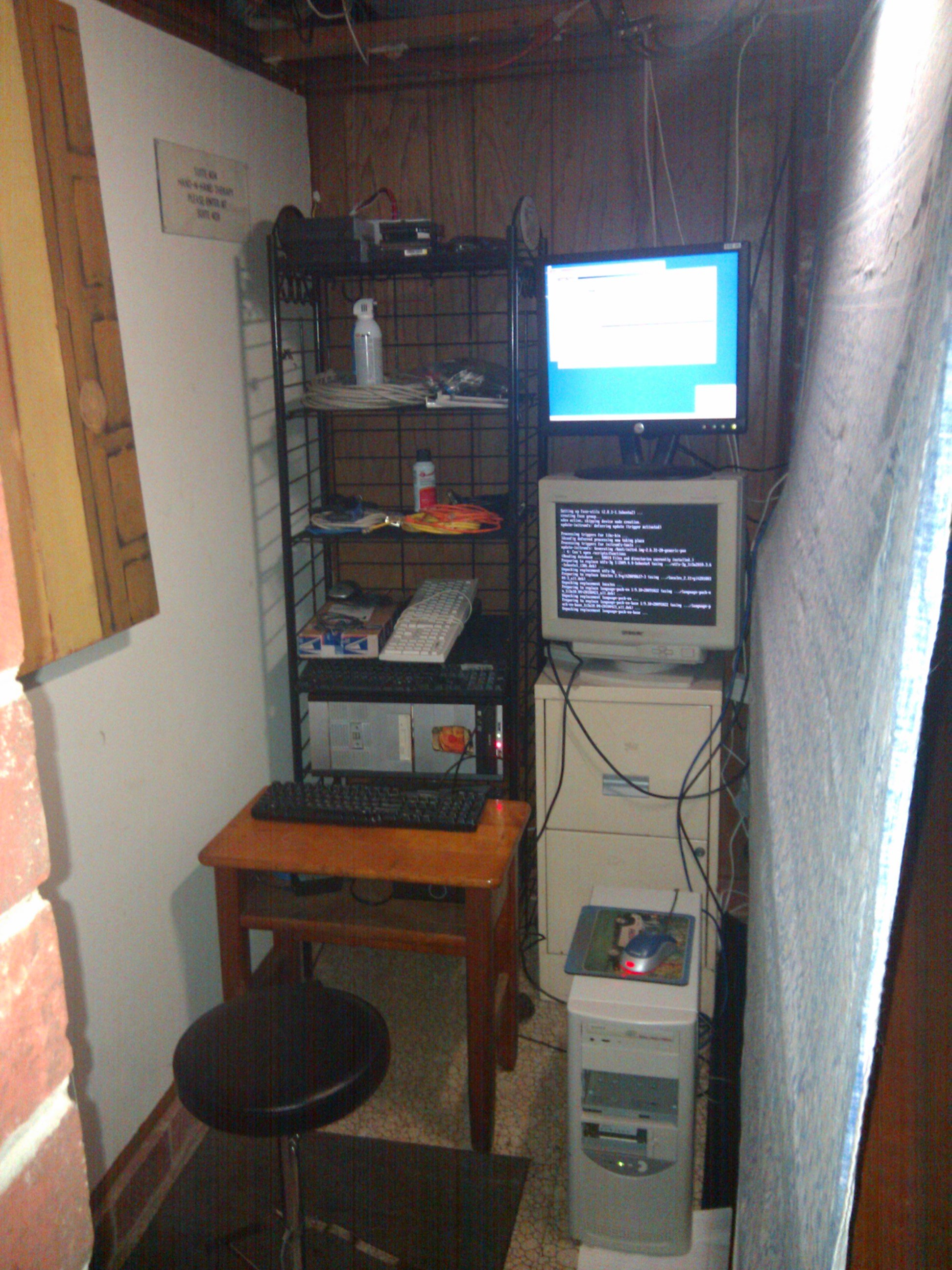
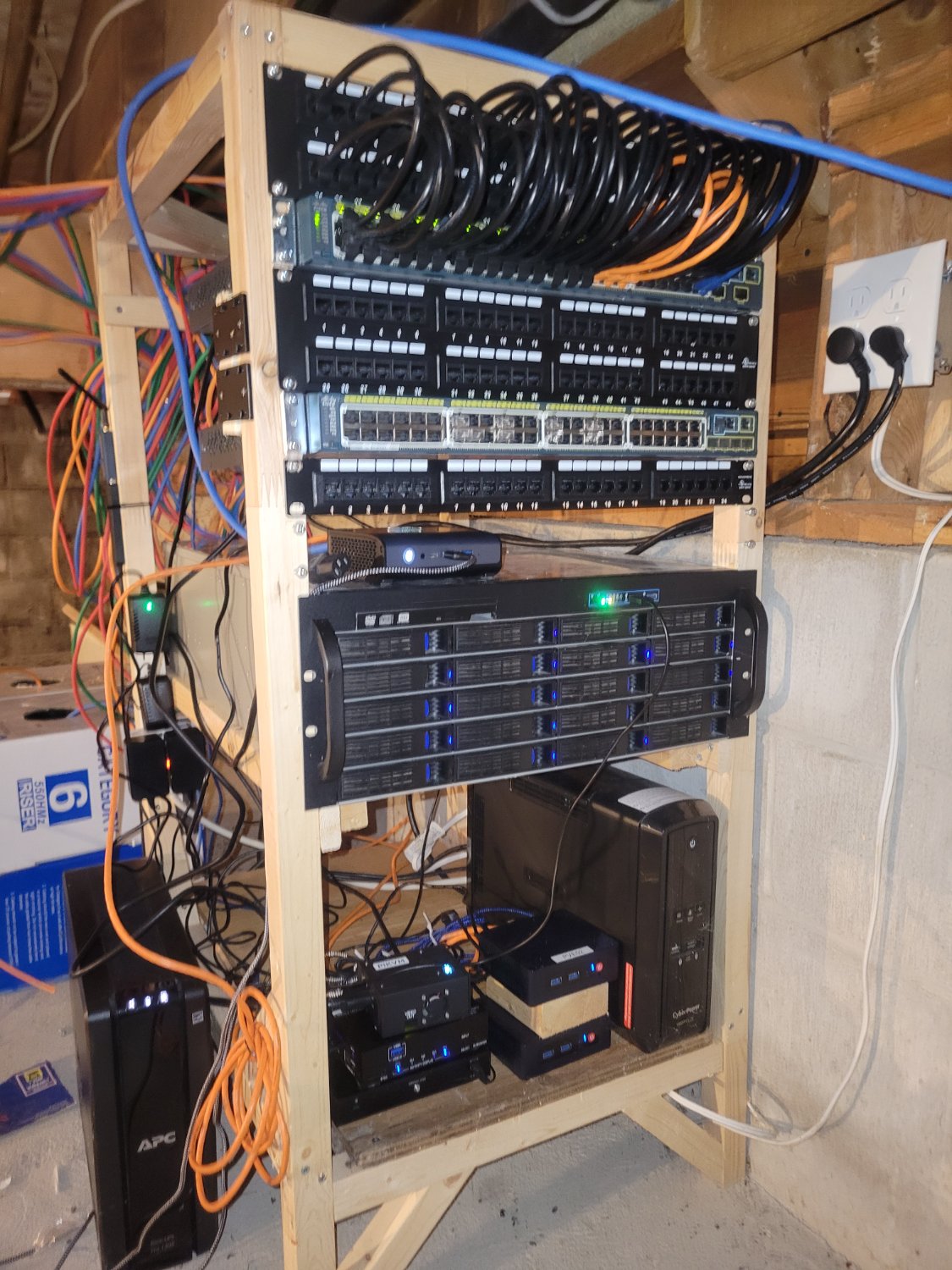
Top to Bottom:
Bottom area:
The access to the crawlspace isn't great so the CrapRack ^tm^ had to be assembled in the crawlspace.

So nobody is going to ask about the rotary phone?
It's a GPO 706, which is a classic British bakelite phone from the '60s. I have it hooked up to a SIP trunk through an OBi 100. Right now it can receive calls but not make them because I haven't gotten around to sorting out a pulse-to-tone dialing converter yet.
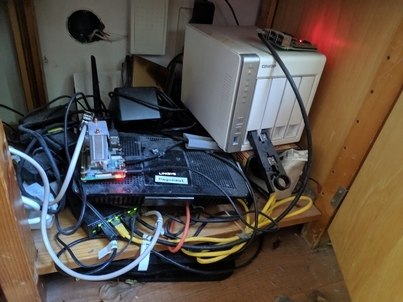
This is how I started in a tiny room. I am not proud, but maybe good to show between all the shiny things here.
I feel like this should be a quarterly post. Really liking all these setups.
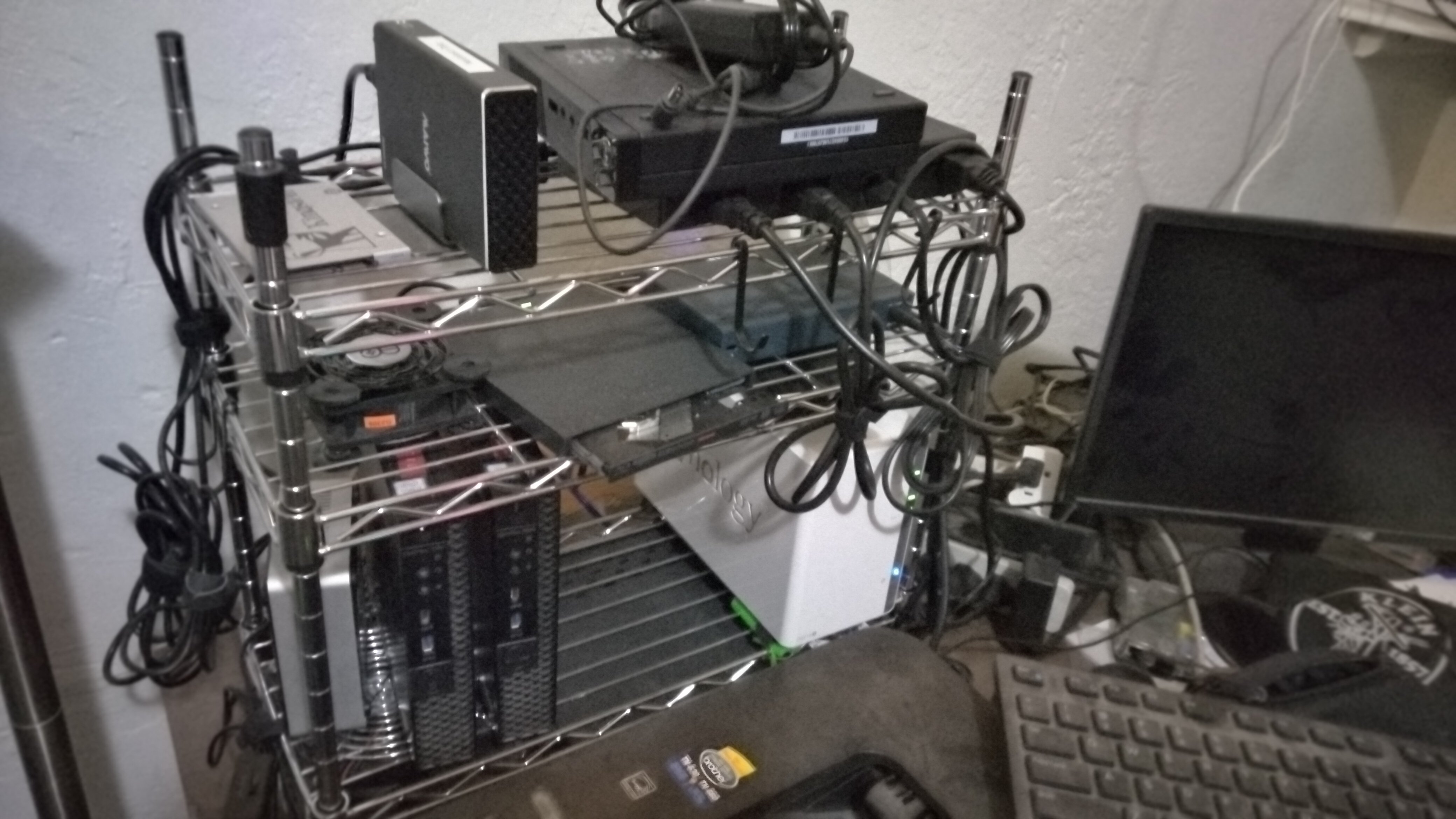
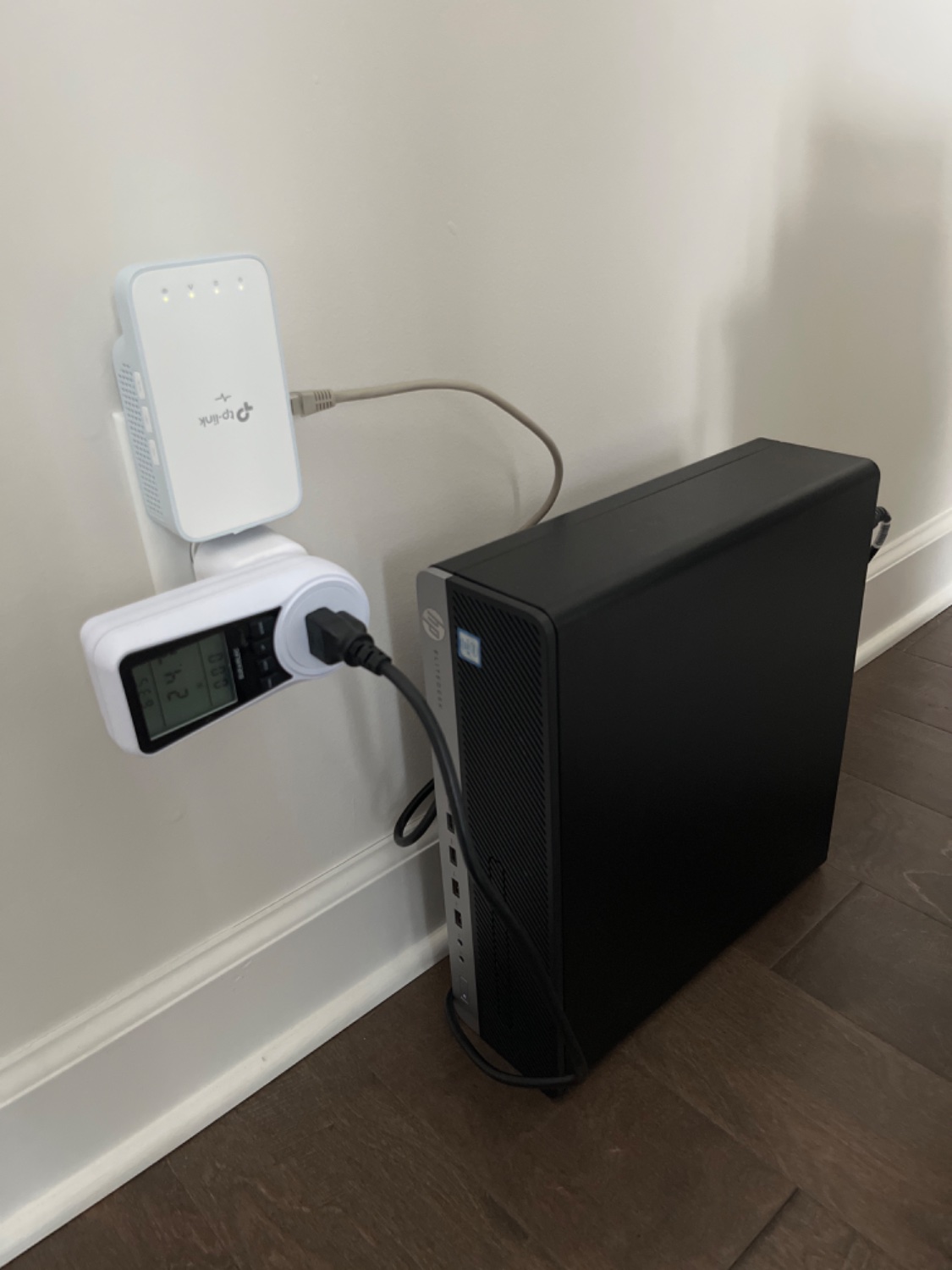
Just a NAS for now. Plan to add PiHole at some point.
The range of sofistication in this thread is actually kind of breathtaking
Comment 1: a small raspberry pi
Comment 2: full rack with tens of thousands worth of hardware
I just got 10 Gbit internet last week so I had a chance to tidy everything up. The ThinkCentre is the 10 Gbit router, the Synology actually hosts everything.
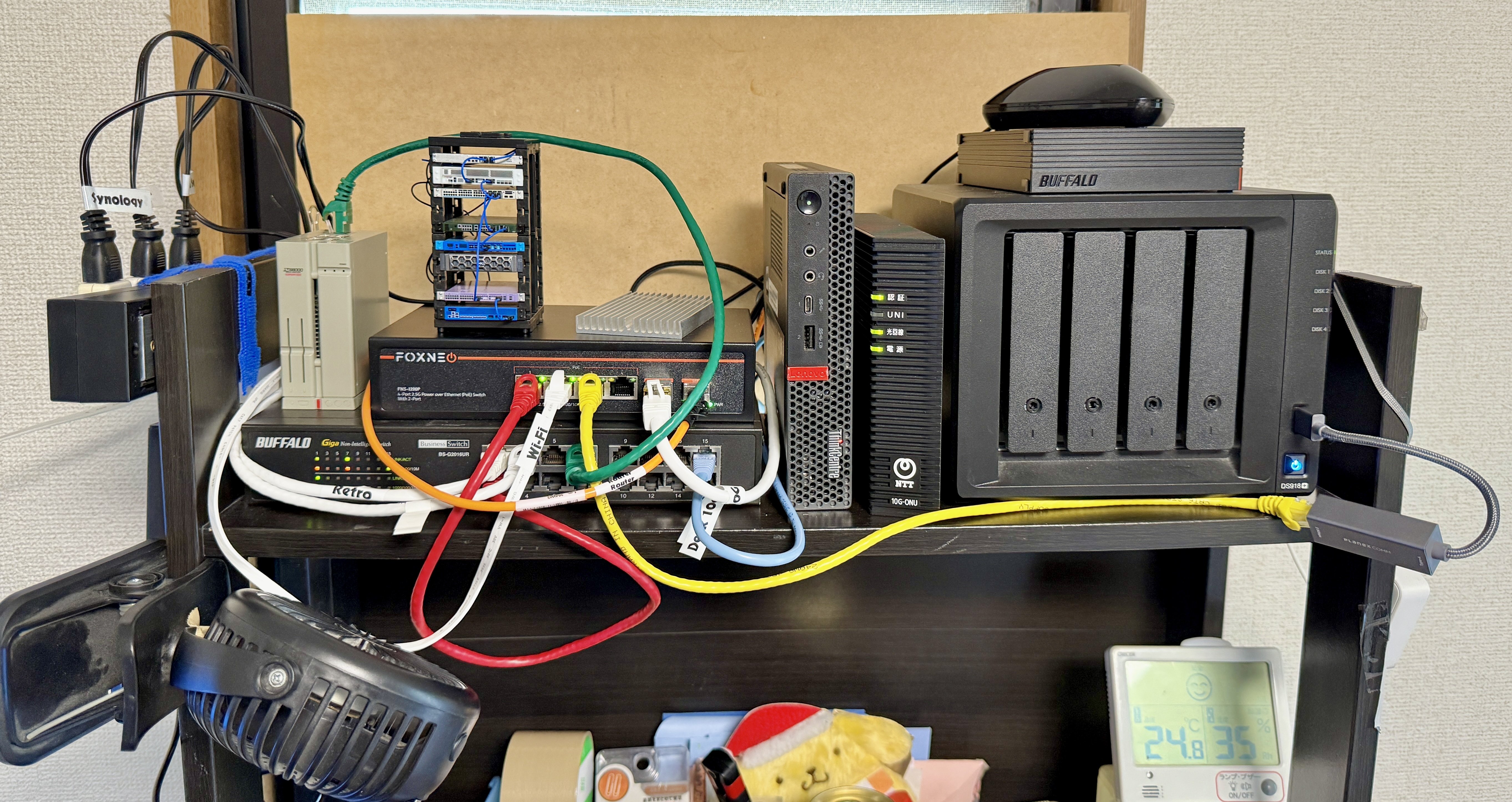
Also finally labeled all the mystery cables. Also replaced the proprietary 20V/12V bricks for the ThinkCentre and 10G Fiber ONU with USB-C adapter cables to keep things tidier.
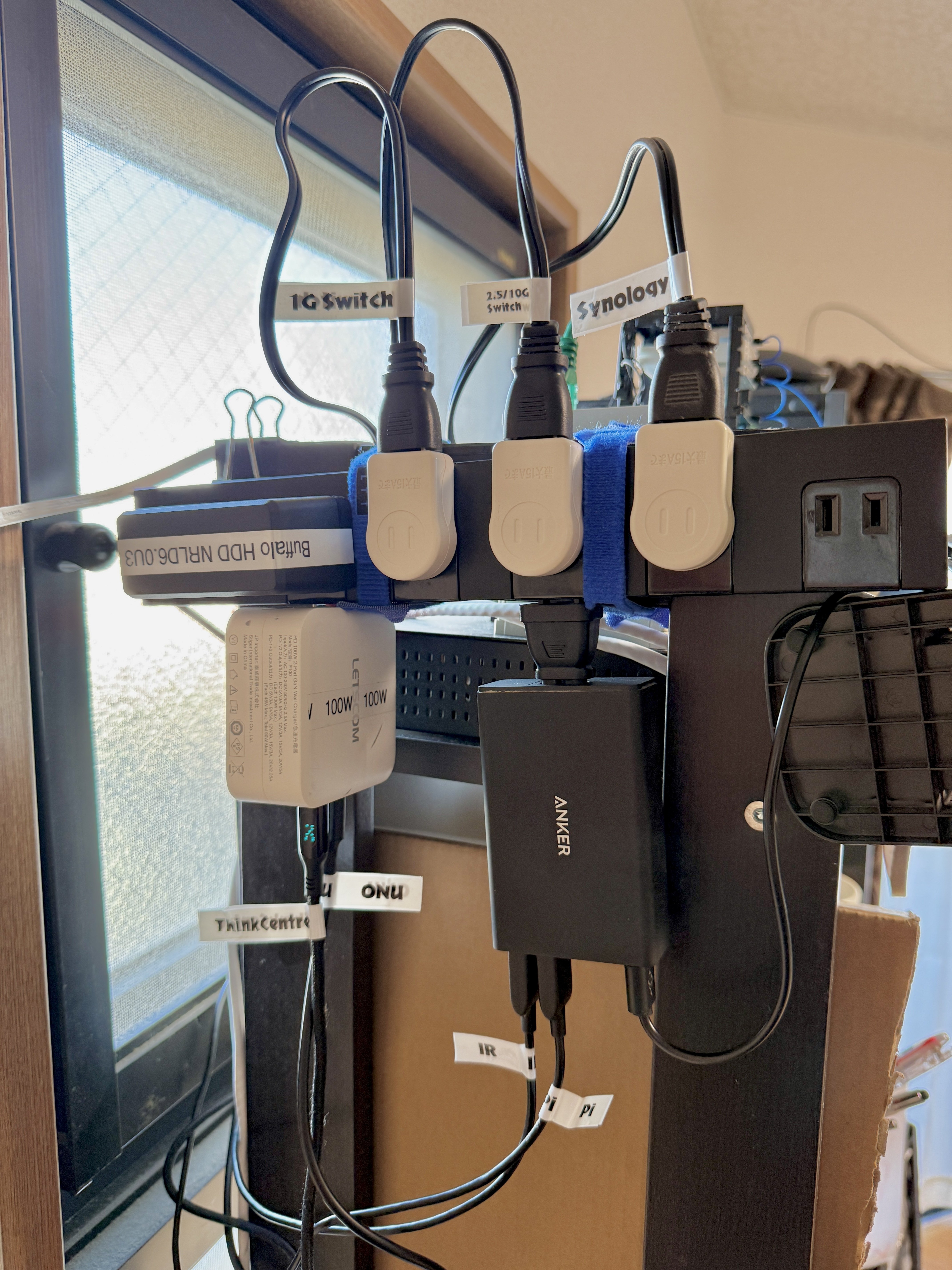
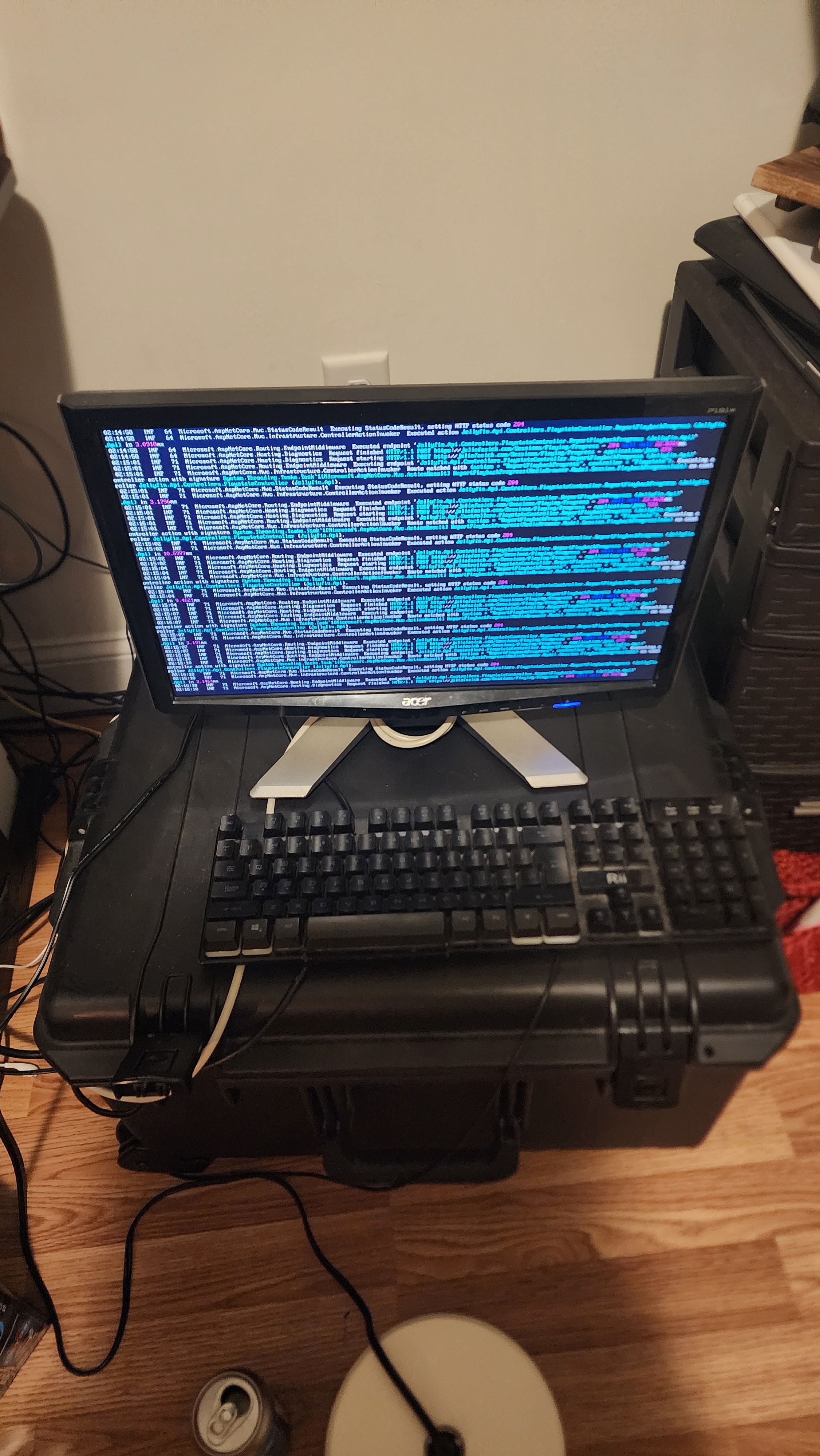
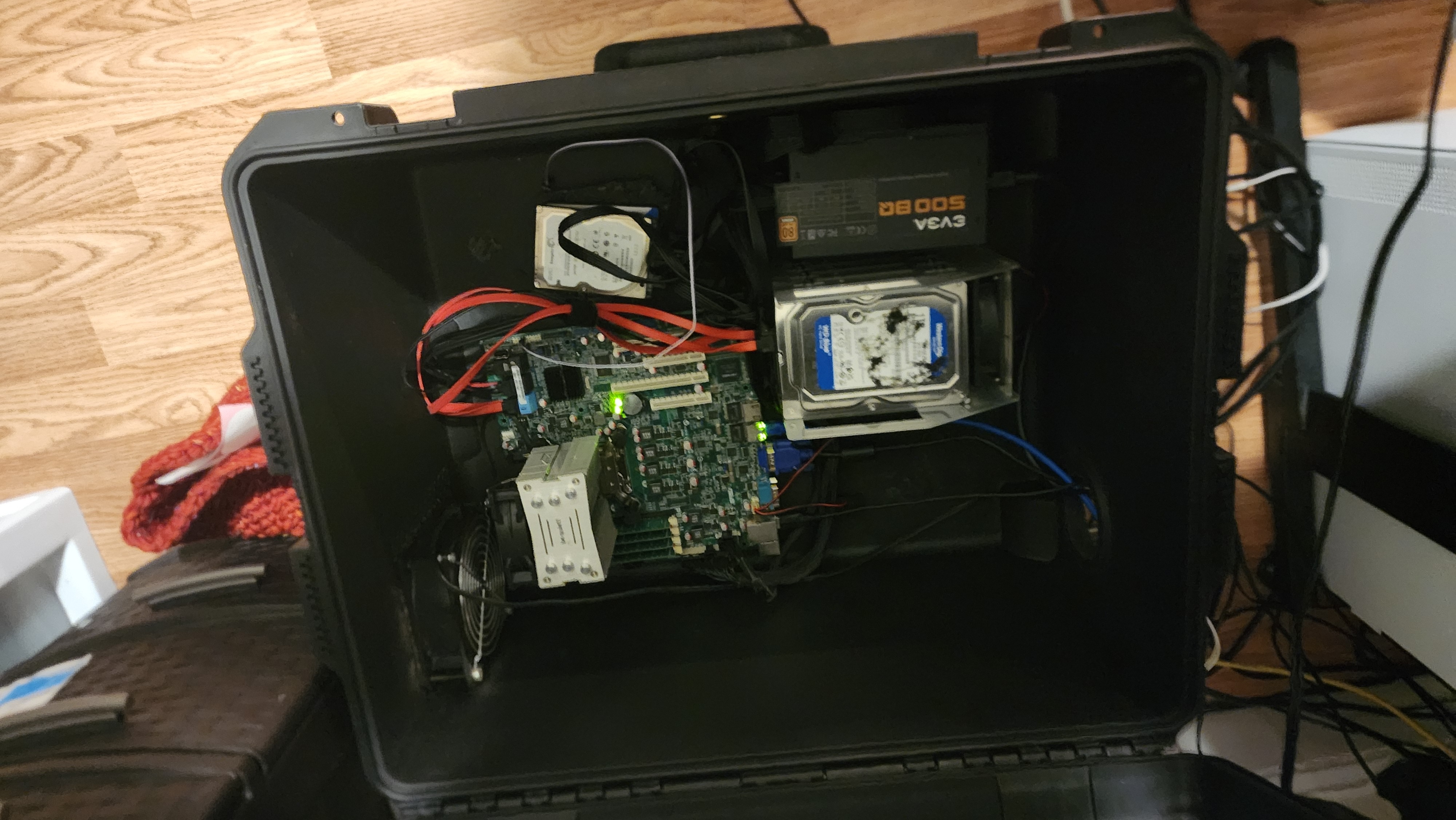
mostly runs jellyfin for a group of about 30 users (2 or 3 on at most times). runs alpine on bare bones. the box was originally filled with foam cutouts from storing iPads in a school district I worked at. I figure it's 20tbs of storage and 16gb ecc is a welcome upgrade. it stays cool cause I cutout half the side and put an AC fan in there. future upgrades involve the Nvidia k40 card I have, but I need to design an active cooling system for it before it can be installed as that thing gets HOT
The small board you can see is a pi hole
I do have more tech elsewhere but this pile is comically ugly
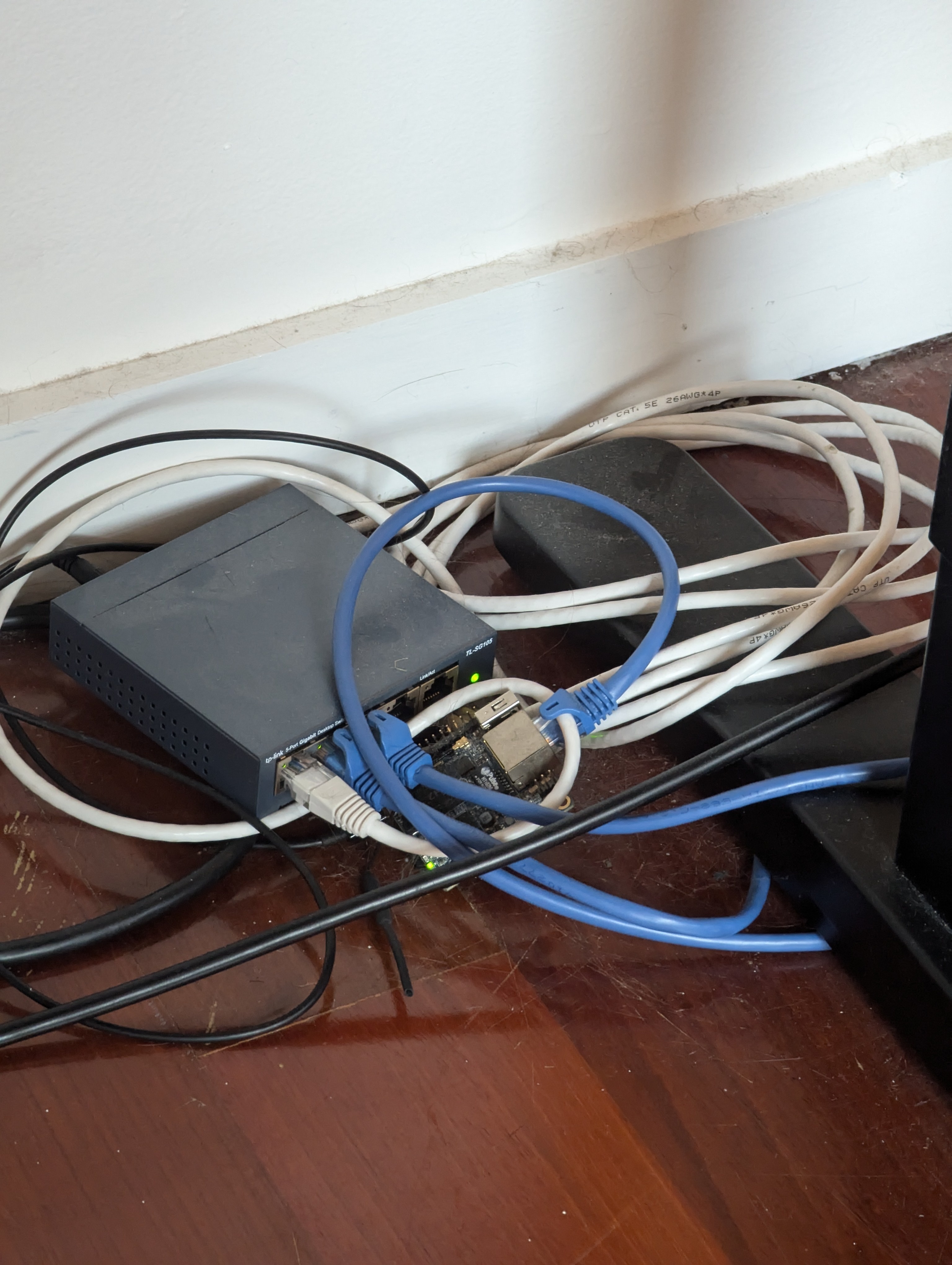
Lenovo ThinkCentre M900 that I bought refurbished for ~€130
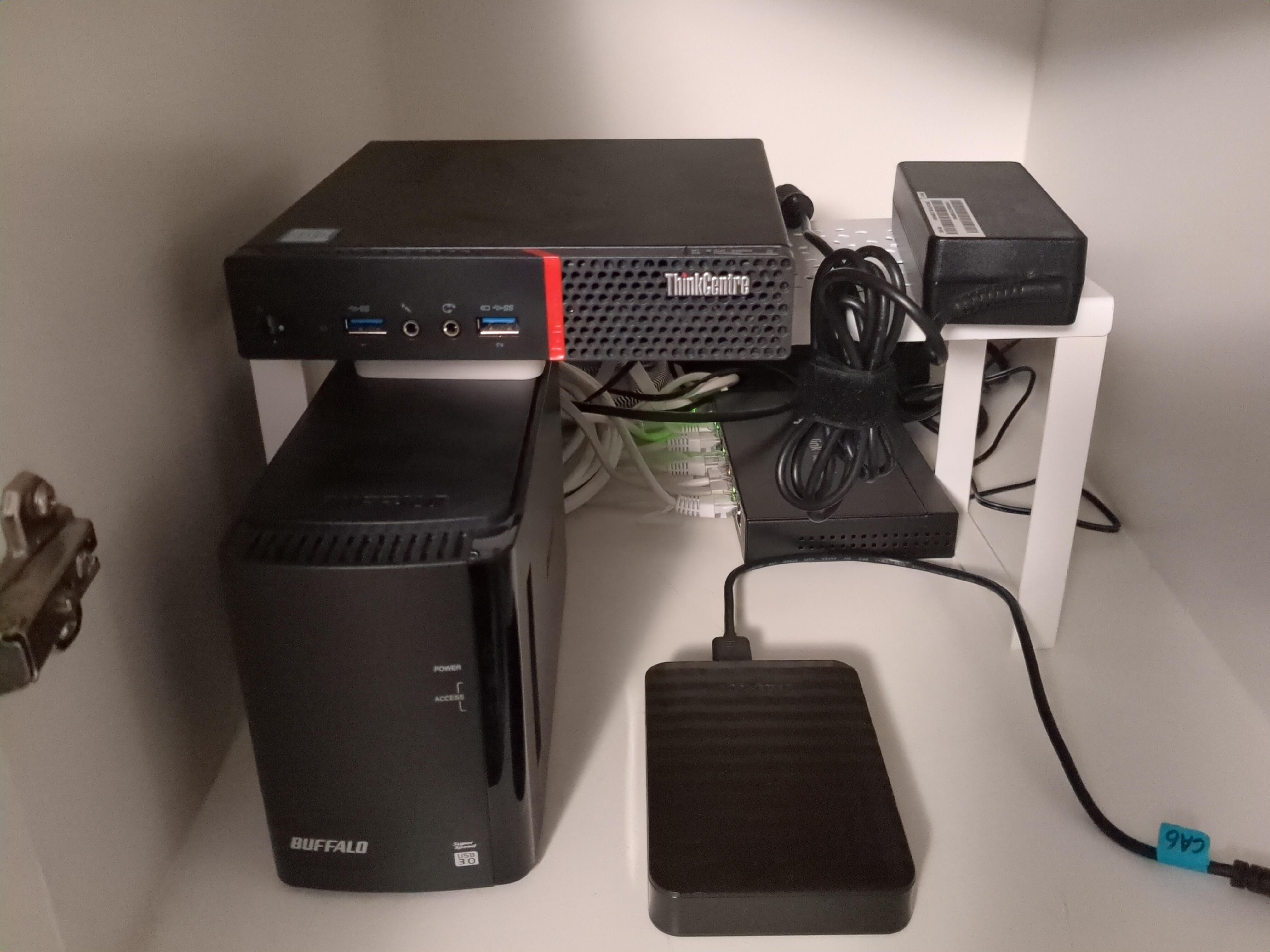
Custom build
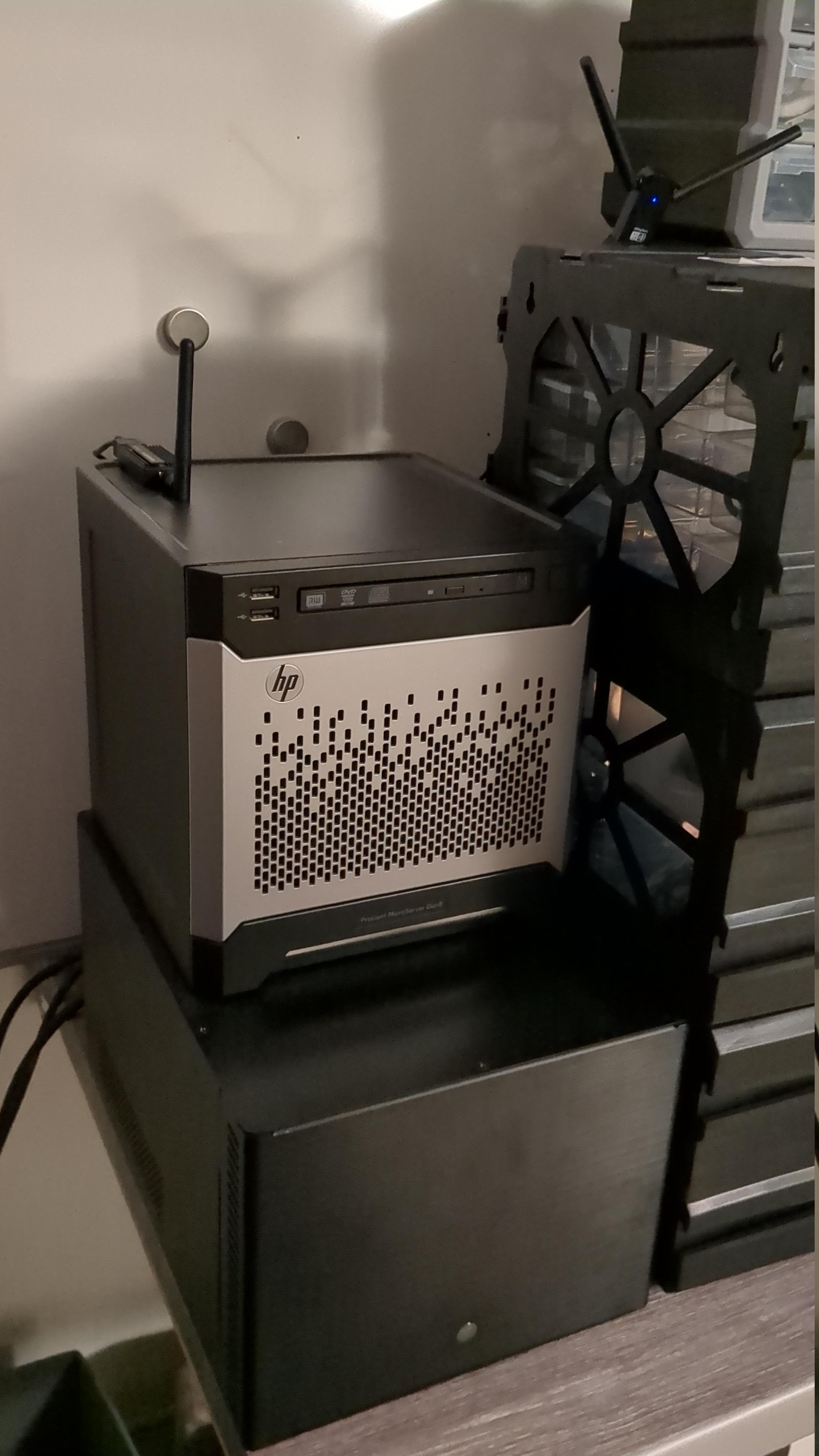
(Not the Proliant Microserver Gen8 on top, the device below)
The antennas are from a Sonoff Zigbee dongle and a bluetooth dongle for Home Assistant.
I've mostly focused on power usage, price, and reliability since I'm a student and don't want to spend a month's worth of income on a "home lab".
It's running the following:
It's using about 10% CPU and is running below 40°.
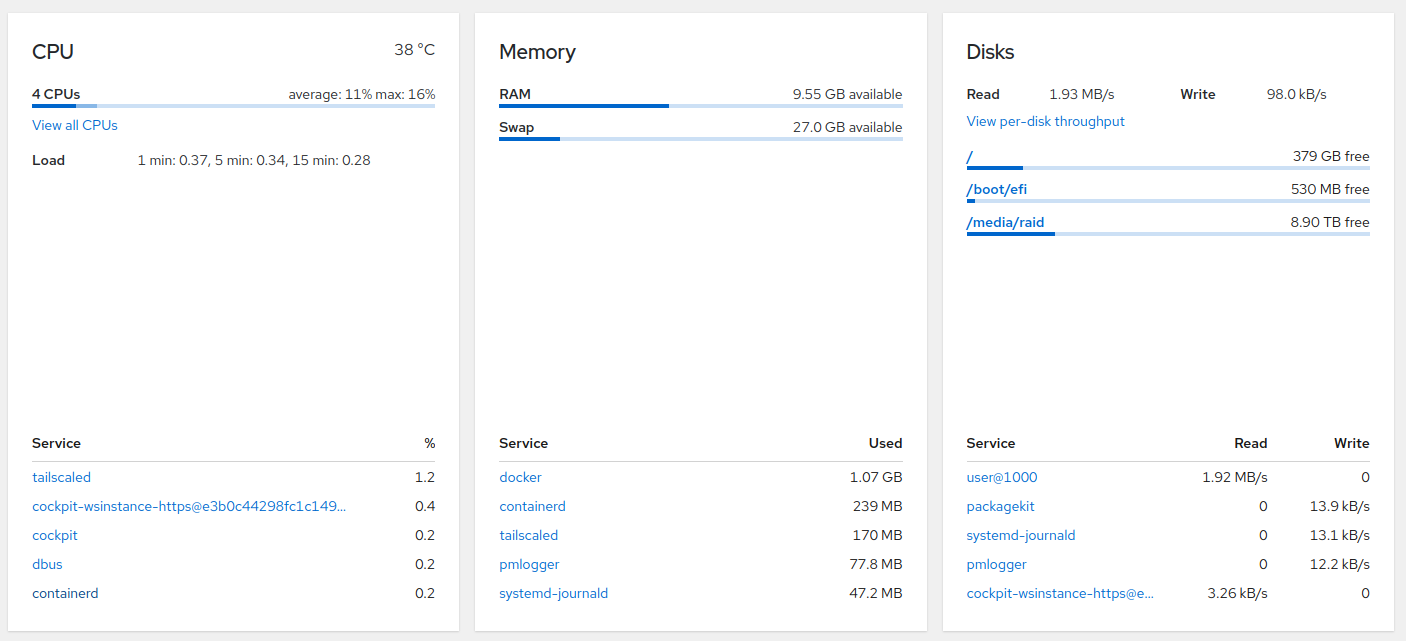

From top to bottom:
I’m planning to move my Lemmy instance to its own 1.5U.
The whole setup uses around 80-100 watts.
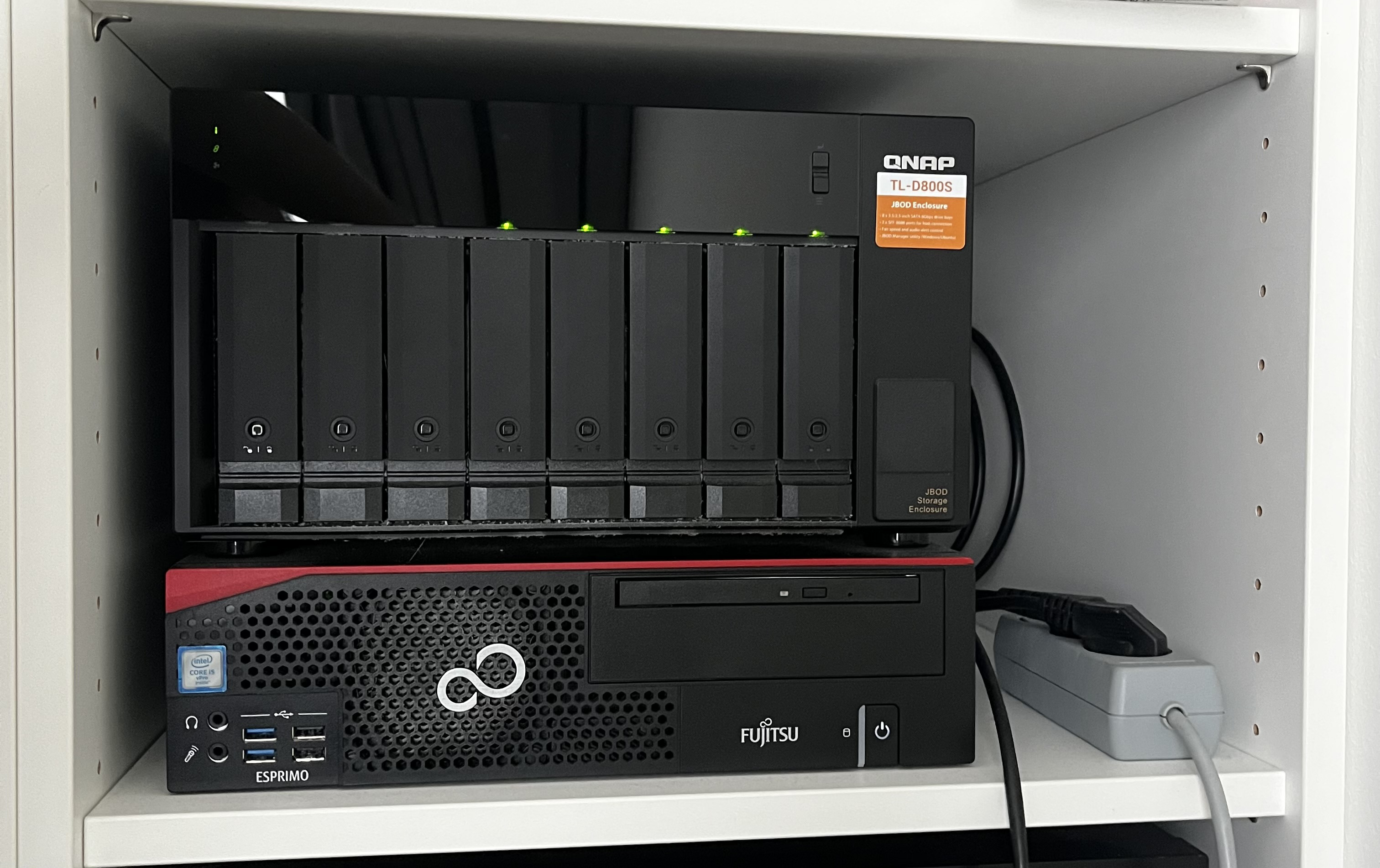
The disks are the most uggo part. They’re a bunch of old disks of varying sizes with a RAID+LVM setup to make the most use of them while still being redundant.
lsblk output of the whole thing
saiko@vineta ~ % lsblk
NAME MAJ:MIN RM SIZE RO TYPE MOUNTPOINTS
sda 8:0 0 111.8G 0 disk
├─sda1 8:1 0 512M 0 part /Volumes/Boot
└─sda2 8:2 0 111.3G 0 part /nix/store
/
sdb 8:16 1 372.6G 0 disk
└─sdb1 8:17 1 372.6G 0 part
└─md1 9:1 0 1.5T 0 raid5
└─storagevg-storage 254:0 0 6.3T 0 lvm /Volumes/storage
sdc 8:32 1 465.8G 0 disk
├─sdc1 8:33 1 372.6G 0 part
│ └─md1 9:1 0 1.5T 0 raid5
│ └─storagevg-storage 254:0 0 6.3T 0 lvm /Volumes/storage
└─sdc2 8:34 1 93.1G 0 part
└─md2 9:2 0 279.3G 0 raid5
└─storagevg-storage 254:0 0 6.3T 0 lvm /Volumes/storage
sdd 8:48 1 4.5T 0 disk
├─sdd1 8:49 1 372.6G 0 part
│ └─md1 9:1 0 1.5T 0 raid5
│ └─storagevg-storage 254:0 0 6.3T 0 lvm /Volumes/storage
├─sdd2 8:50 1 93.1G 0 part
│ └─md2 9:2 0 279.3G 0 raid5
│ └─storagevg-storage 254:0 0 6.3T 0 lvm /Volumes/storage
├─sdd3 8:51 1 465.8G 0 part
│ └─md3 9:3 0 931.3G 0 raid5
│ └─storagevg-storage 254:0 0 6.3T 0 lvm /Volumes/storage
└─sdd4 8:52 1 3.6T 0 part
└─md4 9:4 0 3.6T 0 raid1
└─storagevg-storage 254:0 0 6.3T 0 lvm /Volumes/storage
sde 8:64 1 7.3T 0 disk
├─sde1 8:65 1 372.6G 0 part
│ └─md1 9:1 0 1.5T 0 raid5
│ └─storagevg-storage 254:0 0 6.3T 0 lvm /Volumes/storage
├─sde2 8:66 1 93.1G 0 part
│ └─md2 9:2 0 279.3G 0 raid5
│ └─storagevg-storage 254:0 0 6.3T 0 lvm /Volumes/storage
├─sde3 8:67 1 465.8G 0 part
│ └─md3 9:3 0 931.3G 0 raid5
│ └─storagevg-storage 254:0 0 6.3T 0 lvm /Volumes/storage
└─sde4 8:68 1 3.6T 0 part
└─md4 9:4 0 3.6T 0 raid1
└─storagevg-storage 254:0 0 6.3T 0 lvm /Volumes/storage
sdf 8:80 1 931.5G 0 disk
├─sdf1 8:81 1 372.6G 0 part
│ └─md1 9:1 0 1.5T 0 raid5
│ └─storagevg-storage 254:0 0 6.3T 0 lvm /Volumes/storage
├─sdf2 8:82 1 93.1G 0 part
│ └─md2 9:2 0 279.3G 0 raid5
│ └─storagevg-storage 254:0 0 6.3T 0 lvm /Volumes/storage
└─sdf3 8:83 1 465.8G 0 part
└─md3 9:3 0 931.3G 0 raid5
└─storagevg-storage 254:0 0 6.3T 0 lvm /Volumes/storage
sr0 11:0 1 1024M 0 rom
My tech stack:
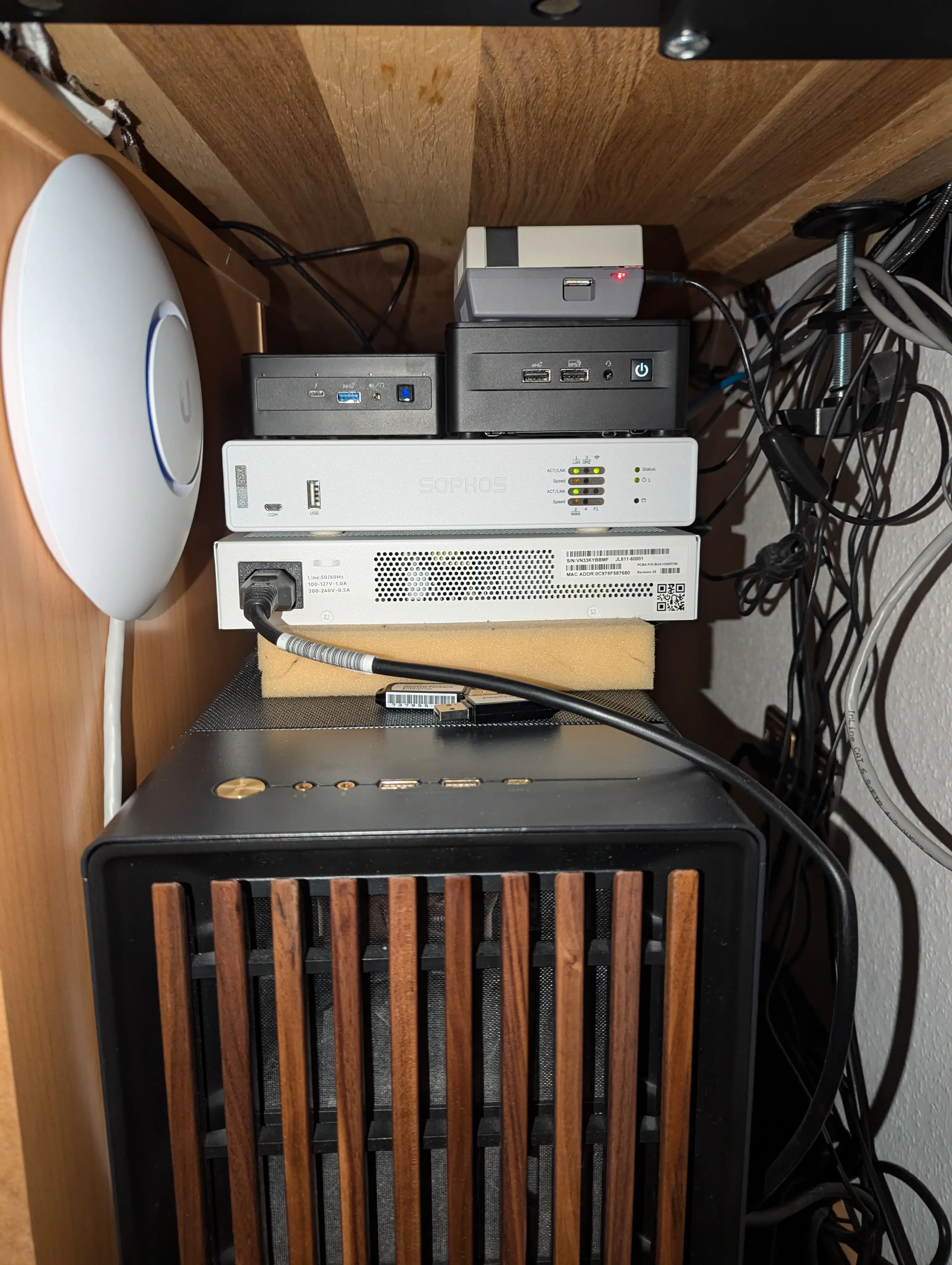
And my storage NAS:
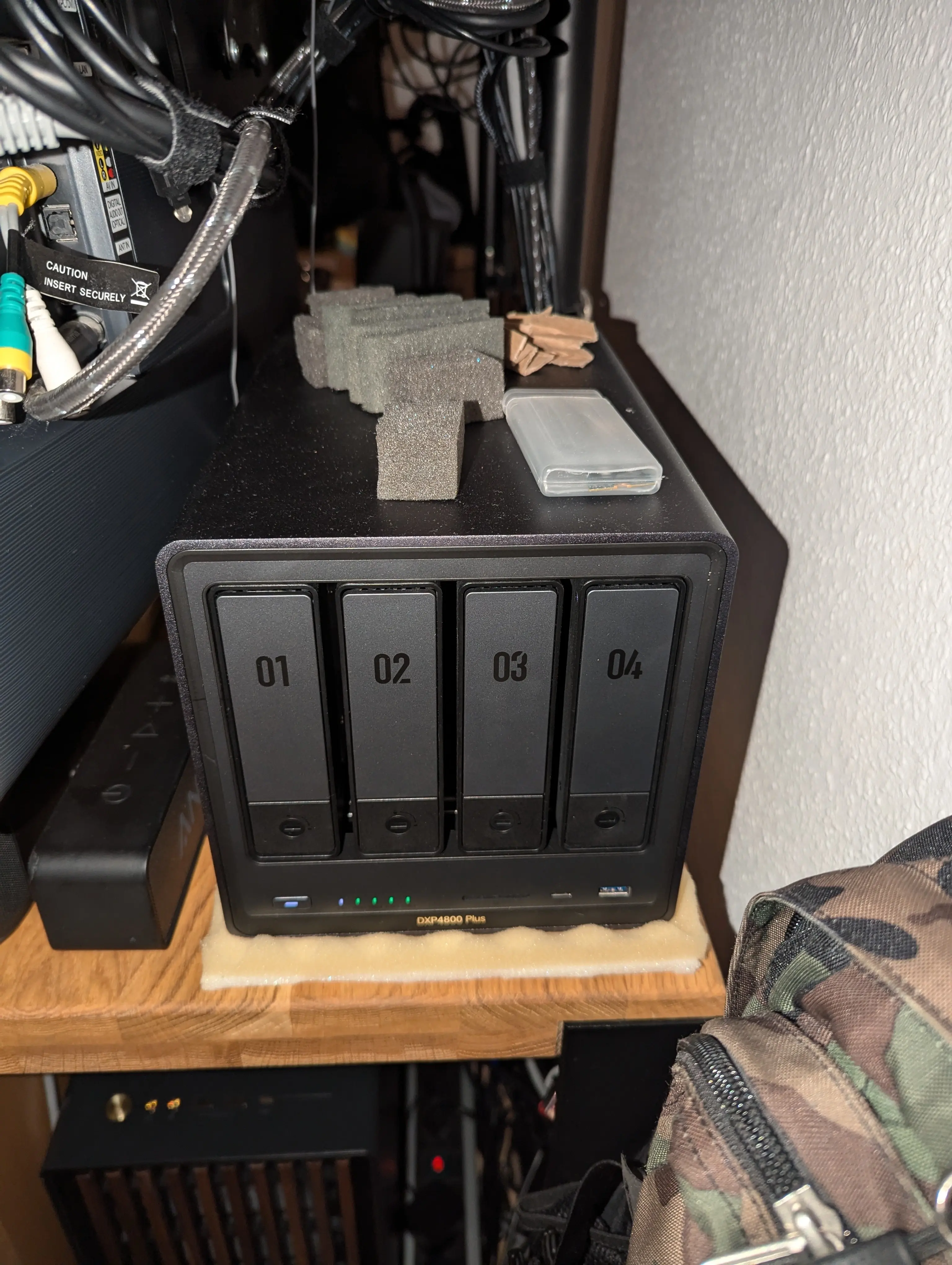
Bottom NUC: General compute
Top NUC: Proxmox with homeassistant, windows server and debian
Raspberry Pi4 inside N64 case: PiHole
Access Point: Unifi Pro
PC for gaming: R7 7800X3D + Nvidia 3070 inside Fractal North
NAS: Ugreen 4800+ with 4x 15TB drives for a total of RaidZ2 30TB usable storage. Used as NFS storage for proxmox.
How it started: 2 8TB external HDDs connected to my bottom NUC.
Primary applications:
*arr Suite, Jellyfin, several minor apps.
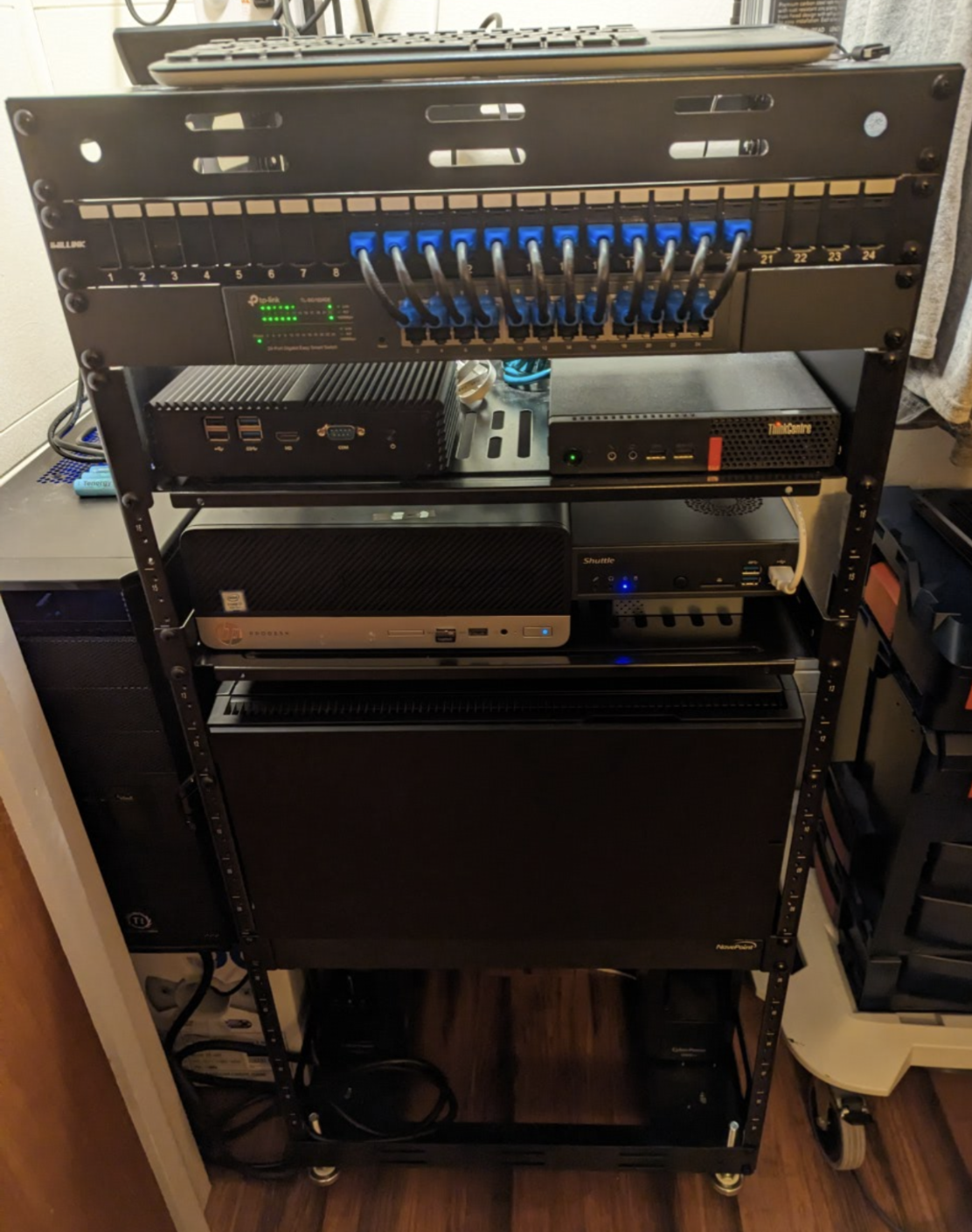 From top to bottom:
From top to bottom: